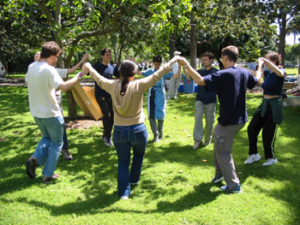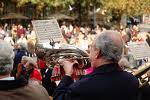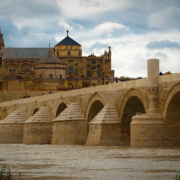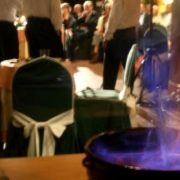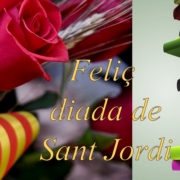The Sardana- Traditional Catalan Dance
Every Sunday, Catalans gather outside in their city’s plaza to do Catalonia’s centuries-old national dance, the Sardana. It’s a very sweet patriotic dance we are quite enchanted by. The most recently we observed sardanas it was when we were in a charming little medieval town called Besalu. Older Catalans are especially proud of doing it because the Spanish dictator Franco, a fascist who ruled from the 1930s until 1977, made it against the law for Catalans to speak their own language or do the sardana on Sundays. This dance is just one testament to the strong pride and energy Catalans put into keeping their culture alive.
The origin of the Sardana is not clear though some say that it was already popular in the 16th century. What remains undisputed is that the Sardana was a popular dance in the Emporda region by the end of the 19th century. Contributing to its mounting popularity by this time were the additions from similarly popular genres such as Zarzuela and the popular Italian operas of the time, which increasingly made the Sardana a fad dance.
As the rise of the Sardana took place, in the context of the Renaixenca or newborn Catalan nationalism, the origins of the dance were embellished in order to symbolize a distinct Catalan ethos as to serve Catalan nationalism. Modern choreography was established as late as the end of the 19th century and features slight differences from the original North-Catalonian dance. Pep Ventura´s band is credited with stabilizing different variants around a clear 6/8 rhythm and fixing the instrumental ensemble. Though some Iberian and Mediterranean circle dances follow similar patterns, instrumental music for the Sardana has achieved a complexity of its own.
The music is provided by a cobla, a small group of musicians playing mainly brass instruments. Tambourines provide the rhythm. The flaviol, a small flute with a tone akin to that of the piccolo, gives these bands a characteristic high pitched sound. The dancers form a circle which gradually enlarges as more dancers join it. When it becomes too large for the space available, the circle may break into smaller ones or a another ring may form within the large one.
Among dedicated dancers, the sardana has a well defined etiquette, e.g. as to whether the ring should be broken to the left or to the right of a man. You may see these “purists” in a small, perfectly formed circle apart from the rest, their foreheads held high and their eyes almost closed in an expression of concentration, in harmony with the music and with each other. They may not take kindly to the ring being broken by a novice or stranger, tightening their grip rather than parting to let the circle enlarge. The late Jean-Pau Giné, a Catalan singer from the French village of Bages, once commented when vexed by a refusal “You are nothing but legs!”. Generally, however, anyone who can make a passable attempt at the steps is welcome to join in. It is a quintessential part of the Catalan experience.
Most of our private guides, as proud Catalans, can dance Sardana so you can ask them to teach you a lesson while they accompany you on one of our Day Tours in Catalonia where you can discover Medieval villages, beautiful beaches and of course some of the best local Spanish food and wine.

